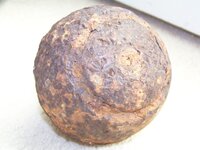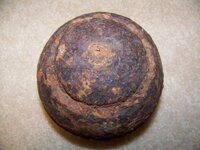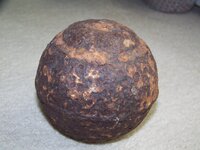
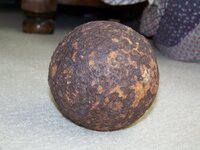
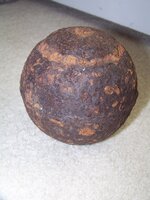
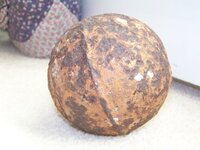
Wonder if you could help me identify this cannonball? It has me stumped. It looks like a fused case shot ball but doesn't match the specs on The Civil War Artillery Projectile and Cannon Home Page. I measure the diameter at 4.01 inches and weighing in at 6.9 pounds. The diameter shows it could be a 9 pounder, but the chart doesn't show that any case shot were made in the 9 pounder class. 9 pounder class isn't even civil war, is it? It also has a distinct ridge around the center. What's up with that? I see a hole on the opposite side of the fuse, but it's filled in (pic 2). Has it been drilled and defused then filled in again? I have no history on the ball. Can you help?
Upvote
0


